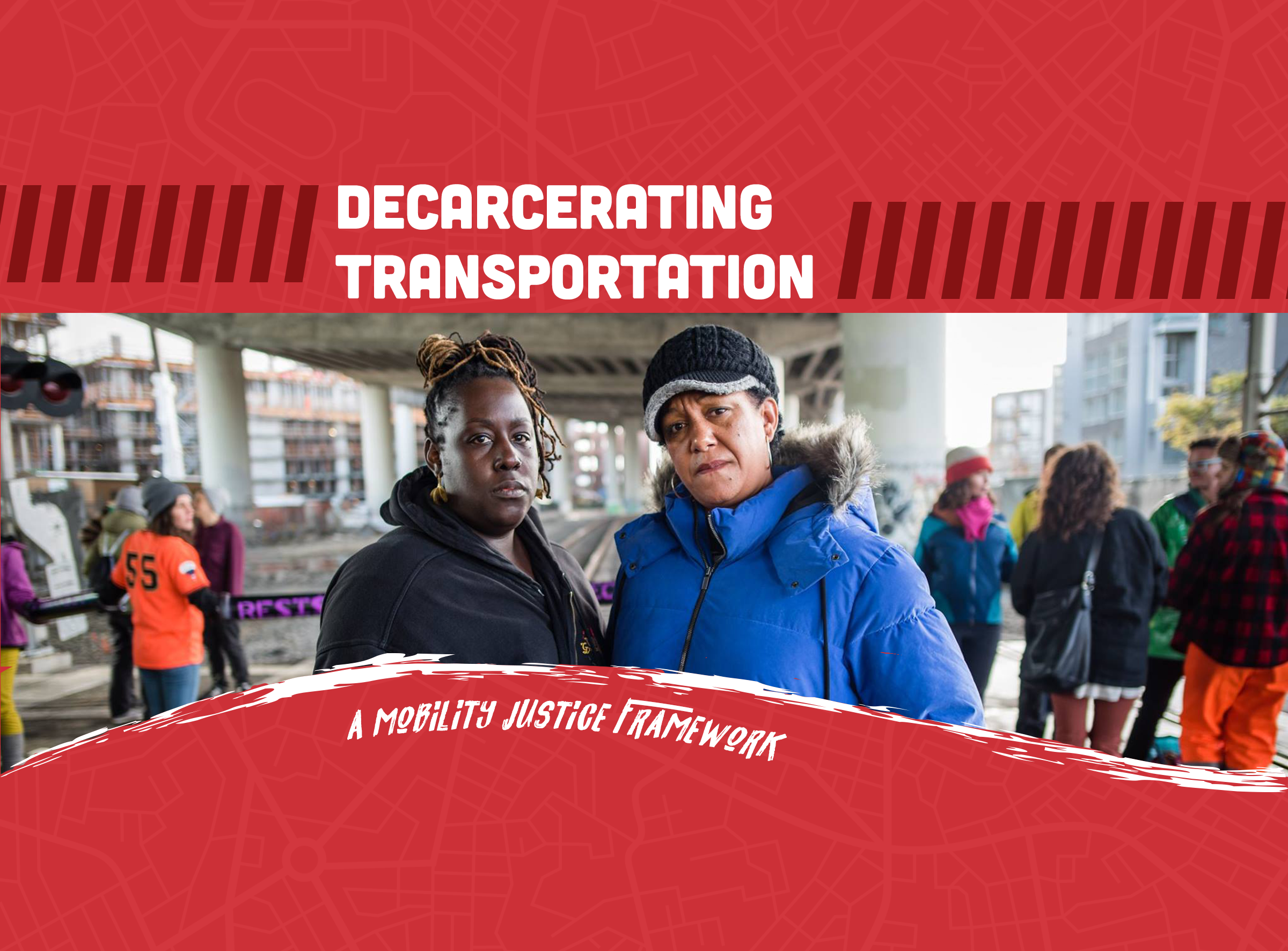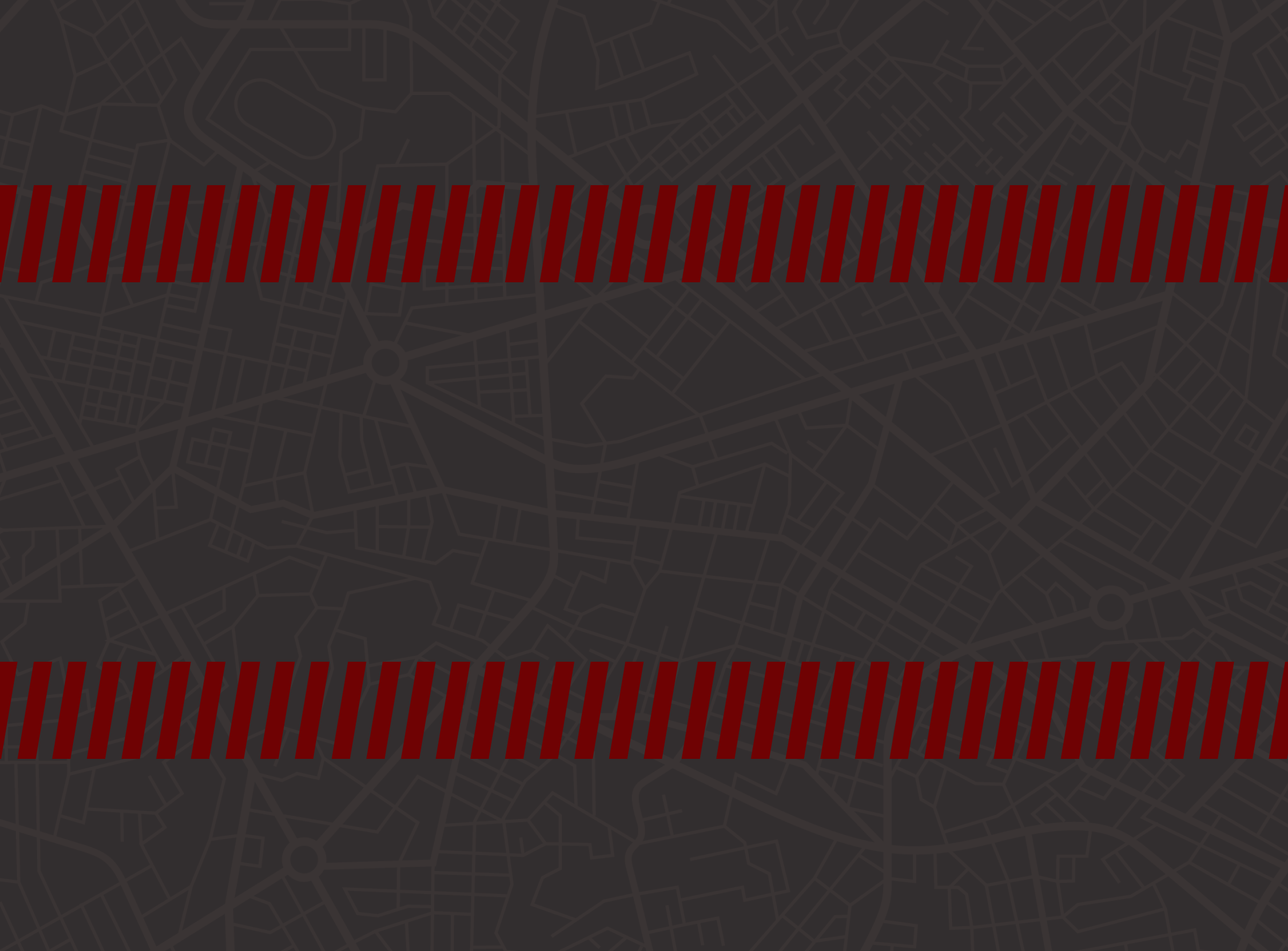
Decarcerating Transportation
A Mobility Justice Framework
Executive Summary:
A Roadmap for Police-Free Transportation
Decarcerating Transportation, the Seven D’s of Mobility Justice Framework, is a roadmap designed to raise awareness of the deep ties between the criminal legal system and public transportation in the United States.
The intersection between the transportation and criminal legal systems has a long, sordid history, encompassing a range of discriminatory practices and policies that disproportionately impact marginalized communities, particularly those who are low-income, BIPOC, undocumented, unhoused, facing mental health crises, LGBTQIA, or people with disabilities.
Developed by transportation equity and racial justice advocates, the framework covers critical issues ranging from enforcement technologies to the criminalization of movement. It is intended for governments, transit agencies, federally designated regional planning agencies such as Metropolitan Planning Organizations (MPOs), non-profits, impacted communities, organizers, and advocates seeking to advance mobility justice.

A Roadmap For Decarceration:
The Seven Ds for Mobility Justice
1. Decriminalize transportation:
Evaluate and change the penal and criminal codes governing mobility, encompassing walking, biking, driving, and public transit. Decriminalize conduct to reduce police encounters. Restrict law enforcement authority to reduce escalated violence and racial bias. This will save lives, money, and valuable resources that can be used to create actual road safety rooted in community needs.
2. Divest from incarceration, invest in decarceration:
Remove law enforcement from transportation. Eliminating funding for law enforcement approaches is demanded if current investments are ineffective. While this does not wholly and immediately eradicate police terror, it offers immediate feasible strategies for harm reduction. In addition, direct resources away from carceral systems to break reliance on punitive measures and invest in alternative solutions. This shift reallocates funds towards jobs in infrastructure, traffic management, capital enhancements, complete streets initiatives, and public transit, areas with a labor shortage.
Photo by Malaika Kambon
3. Develop community skills and resources:
Empowering communities to address conflicts without resorting to punitive measures reduces reliance on law enforcement by fostering self-sufficiency, enhancing community resilience, and reducing the potential for violence. This strategy should take additional steps to ensure accessibility, such as providing childcare, multilingual options, and compensation for people’s time.
4. Decide with impacted people:
Prioritizing those directly and indirectly impacted by trauma is critical to crafting policies and solutions that are responsive, fair, and inclusive of diverse needs. Tailored and equitable solutions can be achieved by engaging and centering those affected by the carceral state, road violence, and infrastructure gaps in planning and decision-making. This strategy should ensure accessibility, such as providing childcare, multilingual options, and participant compensation.
5. Design new cultural norms:
Transforming cultural norms is crucial to creating an environment where alternatives to punitive measures are accepted and embraced as viable solutions, fostering a safer and more compassionate society. A shift in car culture is imperative to combat unnecessary car usage, speeding, and the purchase of vehicles that disproportionately harm the environment solely due to their design. This strategy has proven effective in reducing drunk driving and increasing seat belt use.
6. Defend from carceral technologies:
Prevent the proliferation of carceral technologies for the safety of marginalized populations. Demand transparency and accountability for technologies currently in use as they are phased out.
7. Delineate guidelines for community-oriented data collection:
Given the increase in data collection through various transportation technologies, guidelines are critical to protecting people. This involves clearly defining the principles, methodologies, and ethical considerations governing data collection in public and private sectors.

“Historically, armed policing has been the default solution to traffic safety concerns. This, however, perpetuates racial profiling, exacerbates societal disparities, and, at times, results in violent death.
Our report advocates for a paradigm shift through the Seven D’s of Mobility Justice, emphasizing justice, equity, and infrastructure-based solutions to create safe roads and reduce engagement with law enforcement.”

Honoring Victims of Traffic Enforcement
We dedicate this report to the lives affected and taken by law enforcement in the context of traffic and mobility enforcement. We grieve for the individuals and their families. Police in the US have killed over 900 people during traffic stops between 2013 and 2023, according to Mapping Police Violence. Many more have been harassed and brutalized. We also honor the at least 11,367 lives of drivers and bystanders lost due to police chases since 1979.

The Decarcerating Transportation, Mobility Justice Framework underscores the need to address the intersection between state violence, public transit, road safety, and the pursuit of equitable and thriving communities.
By adopting the Decarcerating Transportation Framework, advocates and policymakers can contribute to a more equitable and just transportation landscape rooted in empathy, justice, and the well-being of all individuals. This framework presents a radical vision for transportation that is essential for the flourishing of our communities.
Photo by Brooke Anderson






